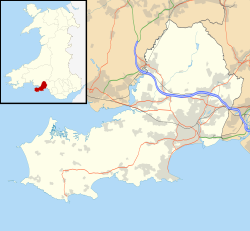
Paul Gustave Louis Christophe Doré was a French printmaker, illustrator, painter, comics artist, caricaturist, and sculptor. He is best known for his prolific output of wood-engravings illustrating classic literature, especially those for the Vulgate Bible and Dante's Divine Comedy. These achieved great international success, and he became renowned for printmaking, although his role was normally as the designer only; at the height of his career some 40 block-cutters were employed to cut his drawings onto the wooden printing blocks, usually also signing the image.

The Fitzwilliam Museum is the art and antiquities museum of the University of Cambridge. It is located on Trumpington Street opposite Fitzwilliam Street in central Cambridge. It was founded in 1816 under the will of Richard FitzWilliam, 7th Viscount FitzWilliam (1745–1816), and comprises one of the best collections of antiquities and modern art in western Europe. With over half a million objects and artworks in its collections, the displays in the museum explore world history and art from antiquity to the present. The treasures of the museum include artworks by Monet, Picasso, Rubens, Vincent van Gogh, Renoir, Rembrandt, Cézanne, Van Dyck, and Canaletto, as well as a winged bas-relief from Nimrud. Admission to the public is always free.

National Museum Cardiff, formerly known as the National Museum of Wales, is a museum and art gallery in Cardiff, Wales. The museum is part of the wider network of Amgueddfa Cymru – Museum Wales. Entry is kept free by a grant from the Welsh Government.

Ceri Giraldus Richards was a Welsh painter, print-maker and maker of reliefs.
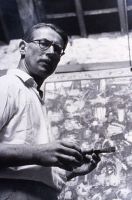
Alfred George Janes was a Welsh artist, who worked in Swansea and Croydon. He experimented with many forms, but is best known for his meticulous still lifes and portraits.
Mervyn Levy was a Welsh artist, art teacher and writer on art. Born in Swansea, where he became a friend of the painter Alfred Janes, the poet Dylan Thomas and the musician Daniel Jones, he spent most of his teaching career in Bristol and London, and made several popular television series about painting techniques. He published monographs on contemporary artists, and a catalogue raisonnee of the works of his friend the painter L. S. Lowry.
James Henry Govier was a British painter and etcher, who worked in Swansea and East Anglia.

Richard Glynn Vivian was a British art collector and philanthropist from the Vivian family, and the founder of the Glynn Vivian Art Gallery in Swansea.
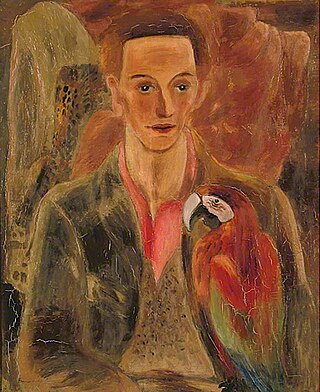
Sir Cedric Lockwood Morris, 9th Baronet was a British artist, art teacher and plantsman. He was born in Swansea in South Wales, but worked mainly in East Anglia. As an artist he is best known for his portraits, flower paintings and landscapes.

Christopher David Williams was a Welsh artist.
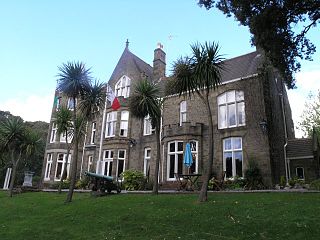
The Mansion House is a historic building in Ffynone Road in Swansea, Wales. The building was commissioned as a private residence but, since 1922, it has accommodated the official residence of the Lord Mayor of Swansea.
Ernest David Bell was an English-born writer and curator, who was a controversial figure in Welsh arts by challenging the country's artistic heritage, but was also a supporter of young Welsh talent in the field of contemporary arts in the 20th century.
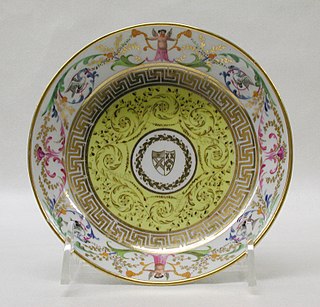
Thomas Baxter Jnr. was an English porcelain painter, and a watercolour painter and illustrator.
Glenys Irene Cour is a Welsh artist.
Frances Richards was a British painter, embroiderer, and illustrator.
William Grant Murray, usually known as Grant Murray, was a British art teacher, gallery curator and artist. He was Principal of Swansea Art School from 1908 to 1943, and the first curator of the Glynn Vivian Art Gallery, Swansea, from 1910 to 1950. He played a leading part in the artistic life of Swansea between the wars.

Christine Kinsey is a Welsh artist, author and curator, now based in Pembrokeshire. She was the co-founder and artistic director of Chapter Workshops and Centre for the Arts, Cardiff, now called Chapter Arts Centre.
Joan Elizabeth Baker was a British painter and art teacher. She taught painting at Cardiff College of Art from 1945 until 1983, being the first woman to run a major art department in Wales.

John Deffett Francis was a Welsh portrait painter and art collector. He is particularly well known for his portraits of figures such as Queen Victoria and the British prime minister Sir Robert Peel, and the bequests of his personal library and art collection to Swansea Library and the British Museum.
Nicholas Evans was a self-taught Welsh artist from Aberdare. He signed his paintings Nick Evans and was sometimes known by that name. His work was influenced by his spiritual beliefs as a Pentecostalist.

